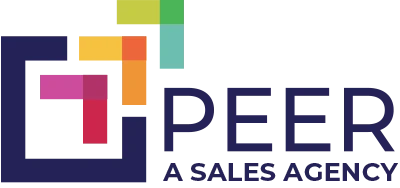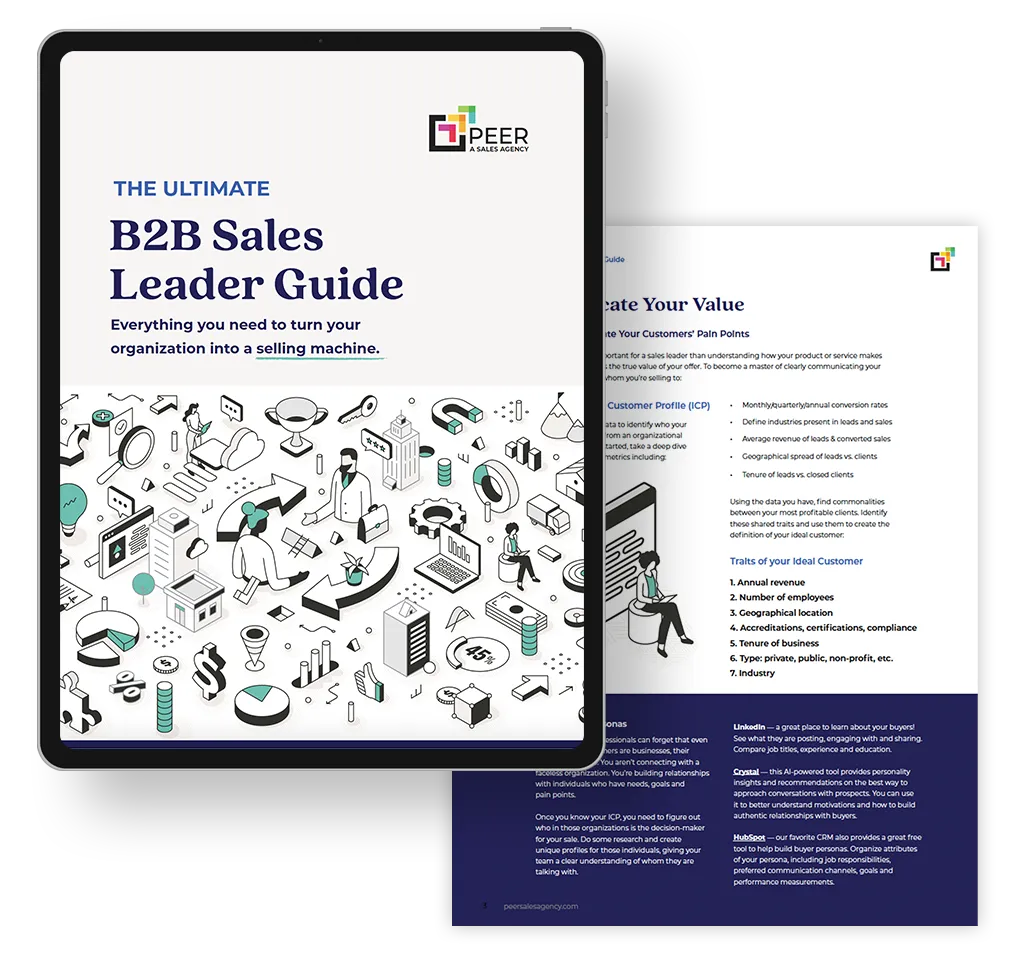How to Create a B2B Buyer Journey Map to Increase Conversions
Are you tired of your leads disappearing into the abyss? Do you want to know what’s going wrong in your sales funnel? Well, I’m here to tell you that it’s not your fault. It’s your buyer journey map. Or lack thereof.
But don’t worry, creating a buyer journey map doesn’t have to be complicated. In fact, it can be a lot of fun. We’ll give you the steps to create your own, and a template to get you started. Read on to learn how this nifty tool can help your sales team close more deals.
What Is a B2B Buyer Journey Map?
First things first. What is a buyer journey map? A buyer journey map shows the steps a buyer takes from learning about your product to making a purchase. It’s like a roadmap for your buyer’s experience. And without one, you’re just driving blind.
It helps B2B companies understand the customer experience and identify key touchpoints where they can influence decisions and increase conversions.
A B2B buyer journey map helps understand how buyers make decisions. It also helps understand what they need and expect. Additionally, it helps identify the important moments that can affect a sale. By creating your map, you can better understand your target customers. Then design personalized strategies to meet their needs and guide them to convert.
Why You Need a B2B Buyer Journey Map
Creating a B2B buyer journey map is beneficial in many ways. From improving customer experience to driving more revenue, this can be a useful tool for sales and marketing teams alike. Let’s take a look at some benefits:
1. Align Sales & Marketing Teams
A buyer journey map outlines each touchpoint and interaction a lead has with your brand. This shared visual representation ensures that both the sales and marketing teams have a clear and common understanding of the entire customer experience. The map also helps define the handoff points between marketing and sales. By defining touchpoints and distributing helpful content at the right time, you can set up your sales rep for more meaningful conversations.
2. Personalize Sales Communication
A buyer journey map also provides valuable insights into the needs and pain points at each stage of the journey. By understanding where the customer is in their buying process, the sales team can tailor their messaging and approach to meet the customer’s specific needs. They can also address any concerns or objections that may arise. This personalized approach builds trust and rapport with the customer, increasing the likelihood of a successful sale.
3. Identify Gaps in Your Sales Enablement
As you map out your stages and the assets needed to help your clients move from one stage to the next, you’ll be able to see where you have holes. Your map becomes a guide for content and sales assets you need to create for your team to help move buyers to the next stage.
4. Close More Deals
One of the biggest benefits of a buyer journey map is having the ability to clearly see the path needed to nurture your leads. Buyer journey mapping will detail each step a buyer goes through before they are at a point where they are ready to buy. By creating nurturing campaigns that align with your map, you’ll start moving leads to conversion instead of losing them into the abyss.
B2B Customer Journey vs. Buyer Journey
If you’ve done any research online I’m sure you’ve noticed the terms “customer journey” and “buyer journey” are often used interchangeably. This can be pretty confusing as to what the true definition is. While they are related concepts, it’s important to understand the difference between the two.
The customer journey refers to the entire experience a customer has with a specific brand, from the very first interaction to post-purchase satisfaction. The customer journey takes into account the holistic experience and focuses on building long-term relationships.
On the other hand, the buyer journey refers specifically to the sales-focused stages. It involves the steps a potential buyer takes as they move from awareness to ultimately making a purchase decision. The buyer journey is centered around the sales cycle and focuses on converting leads into customers.
Steps to Creating a B2B Buyer Journey Map
Alright, let’s dive in. Here’s our template to help you get started. Keep reading for help completing the template, and of course, don’t be shy about reaching out to us for help!
Step 1: Start with Your Buyer Persona
When it comes to growing your business and converting leads, understanding your ideal customer is a pretty important first step. So you are always going to want to have your persona and ICP (Ideal Customer Profile handy. This helps you customize your marketing and sales to focus on their problems and provide solutions that really connect with them. If you don’t have a Persona and ICP defined, don’t worry. Visit this blog for a guide on how to handle that step.
Read: How to Create Your Buyer Persona and Define Your ICP
Step 2: Break Down the Stages of Your Customer Journey
To truly understand and optimize your B2B buyer journey, you need to break it down into key stages. These stages consist of Awareness, Consideration, and Decision. Let’s take a closer look at each stage and how they apply to the B2B buying process:
1. Awareness
At this stage, potential buyers are seeking a solution to a pain or need they have. They may have stumbled across your brand through online research or come across your content on social media. To define the steps within this stage, think about each step your target persona will take as they seek a solution to their pain.
2. Consideration
Your prospect has done research and found materials that educated them about their problem or pain. They are also likely aware of several ways to solve that problem. Now they are in the consideration stage. At this stage, they move to actively researching and evaluating various solutions.
3. Decision
In this stage, potential customers have narrowed down their options and are ready to make a purchase decision. They may compare vendors to find the best fit. They may need to gain consensus with other stakeholders in their company. Understanding what they are up against will help your sales team provide them with the support they need to overcome any obstacles and move that deal to closed: won.
Step 3: Assess Your Buyers Pain Points at Each Stage
By identifying potential obstacles and roadblocks at each stage, you can address them head-on and increase your chances of converting leads. While your buyer may be looking to solve an overarching pain or problem, there will be other smaller issues or problems that arise as part of the decision-making process. Understanding what they are thinking and feeling can help salespeople personalize outreach and build trust with prospects as well.
1. Awareness
During this stage, potential customers are just becoming aware of their problem or need. They may be experiencing frustration or inefficiency in their current processes. By empathizing with their struggles and offering valuable content that addresses these pain points, you can capture their attention and establish yourself as a knowledgeable resource.
2. Consideration
As prospects research different solutions, they may encounter obstacles such as skepticism or concerns about the cost or implementation process. To overcome these roadblocks, provide testimonials or case studies that demonstrate the value and ROI of your product or service. Offering resources like free demos or consultations can also alleviate their concerns and showcase your expertise.
3. Decision
When it comes time for your potential customers to make a decision, they may face obstacles such as budget constraints or a fear of making the wrong choice. To mitigate these pain points, provide clear pricing options upfront and offer flexible payment plans. Giving personalized support and excellent customer service throughout the purchasing process can also help build their confidence and trust.
Step 4: Identify How You Can Help Them at Each Stage
One of the most effective ways to convert leads and move potential customers along their B2B buyer journey is through education and coaching. By providing valuable content and guidance, you can help them overcome any challenges they’re facing and move them to the next step. Here’s how:
1. Awareness Stage
Focus on educating your buyers about the pain points they may be experiencing and ways to solve them. Content like blog posts, videos, or ebooks that address these pain points will capture their attention and position your company as a helpful resource.
2. Consideration Stage
At this stage buyers are researching different solutions and need information on your products. Slicks and FAQs are great assets to share along with guides on how to choose a good partner or vendor. As prospects research different solutions, they may have doubts or concerns about your offering. Your touchpoints should focus on addressing these concerns and showcasing the value of your product or service. Offering free demos or consultations can also show your expertise and how your solution meets their needs.
3. Decision Stage
When potential customers are ready to make a decision, they may require additional reassurance and support. Case studies, testimonials, and comparison guides can provide social proof and build trust. Your touchpoints should focus on providing clear pricing options, flexible payment plans, and personalized support. You want to alleviate budget constraints and any fears they may have about making the wrong choice. Vendor comparison guides can be an excellent resource in this stage.
The key is to provide useful information and guidance to potential customers throughout their journey, guiding them toward making a purchase.
Step 5: Identify the Sales Action and Owner at Each Stage
To ensure that everyone is on the same page and working toward the common goal of converting leads into loyal customers, clearly define the sales actions that need to be taken at each stage and assign owners to those actions.
This involves identifying who owns the lead at the stage in the funnel, sales or marketing and what step they will take at that time.
Stop Leads From Slipping Through the Cracks
Download our B2B Buyer Journey Template and start defining your process today.



